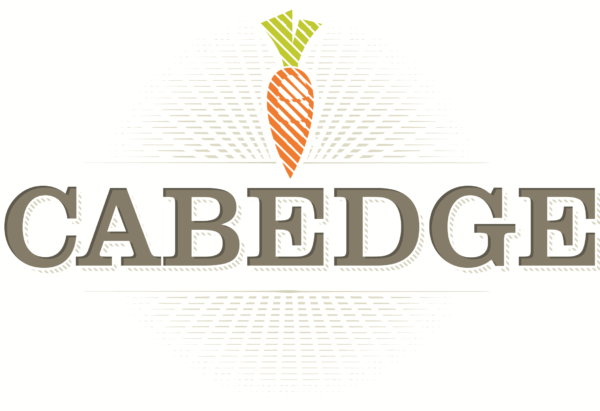Top 10 Tips for Using Google AdWords
With a multitude of marketing and development tools available to organizations now, it can be hard to know which ones are worth the time. Google AdWords is one of those tools. If your organization is looking to increase brand awareness, grow sales or generate leads, Google AdWords might be the tool for you. Unlike a lot of other tools available to organizations to help them grow, AdWords is not free, but it is adjustable depending on an organizations budget. The great thing about AdWords is that it is flexible for individual organizations based on budgets and goals. It can be hard to know where to start with a system like Google AdWords, even after taking the certification classes, so here are ten tips to help you make the most of your AdWords account.
1. Ensure your landing page is the best possible experience for your target audience.
The best way to utilize your Google AdWords account is to ensure you have a solid landing page that keeps users engaged in what you have to offer. Your ad should be promoting what the link will send them to. For instance, if your ad is promoting a new brand of spreadable peanut butter, your Google Ad should send the consumer to a page about that new peanut butter. If it sends them to a page about peanut butter bites, it will confuse the user, and they will exit the page before finding out any additional information or making a purchase, which you don’t want. Creating an engaging, informative and accurate landing page is the first step to utilizing AdWords effectively and efficiently.
2. Use the right keyword match types.
Keywords are the terms or ideas that define your content. They are the words that users will search to find your website and information, therefore it’s very important to get them right since they are your most valuable tool when utilizing AdWords.
There are four keyword match types:
- Broad Match: This is the default match type that doesn’t require any formatting. This will include searches that have misspellings, synonyms, related searches, and other relevant queries. It is the broadest way to get your ad seen (as reflected by the term “broad match”), so if your goal is to increase brand awareness, this is a good place to start.
- Phrase Match — “keyword”: A phrase match means that as long as the phrase within the quotation marks shows up somewhere in the user’s search query, the ad may also appear. For example, if the keyword is “swimming pools” the search “swimming pools in Nashville” and “Nashville swimming pools” will show users the ad. But, if the user searches “I want to swim in pools in Nashville,” the ad will not appear. You have to be careful when using a phrase match because it may weed out unwanted searches, but it may also prevent desired users from finding your information.
- Exact Match — [keyword]: An exact match setting ensures that only the most relevant search results are returned for a user. Exact match actually includes close variations as long as they don’t change the meaning of the search. For example, the keyword [men’s shoes] can show up for the search “shoes for men” even though it’s not the specific phrase. Exact match weeds out the most unwanted search queries.
- Negative Match — -keyword: A negative match means that that search term will not show ad results for the searcher. This is best used when you absolutely do not want a search term to bring up your ad. For example, if you’re a college bookstore, and you don’t sell USB drives, it’s important to negative match USB drives, so if someone searches for it, you don’t have to pay for a click that won’t lead to a sale.
3. Utilize negative keywords.
Now that we’ve talked about negative keywords, we can talk about how you should definitely be using them. Negative keywords are important because they ensure you aren’t paying for clicks that don’t lead to conversions. If someone is searching for something that you don’t sell, but you’re not specific enough to weed out those searches, you’ll be paying for people to click on your ad but not make any purchases themselves. The most efficient way to curb those needless clicks is to incorporate solid negative keywords.
4. Utilize every inch of space allotted to you.
Google AdWords has added plenty of real-estate to spice up ads that display alongside searches. There aren’t a lot of characters allotted for that space, but make sure to utilize each heading and descriptive area of text you can to ensure your ad appeals to your target audience. The more specific your ad, the more clicks and hopefully conversions is will lead to.
5. Use ad extensions when applicable.
AdWords has some great extensions that can spice up any ad. In addition to utilizing all the text space allotted, it’s important to use ad extensions to further make your ad stand out to users. Some of the most important extensions include the call extension and the location extension. These extensions make your ad more user friendly and might help you accomplish some of your goals. For a full list of extensions, check out Google Support.
6. Utilize geo-modifications when biding for AdWords.
This is specifically important if your organization serves or is trying to target a specific area, but if your organization serves nationally and internationally, this may not be necessary. For example, if you have brick-and-mortar shops in two locations (say one is in Nashville and one is in Los Angeles) and you don’t serve a customer base online, it’s going to be imperative that you focus your ads in those locations because people in New York can’t be patrons, and you wouldn’t want to pay for them to click on your ad without them being able to visit your shop.
7. Optimize campaigns for mobile usage.
Look around any given room and you’re likely to see people scrolling on their phones. Typically those people are searching for an answer to some inquiry, and if your ad isn’t optimized for mobile usage, you may miss out on potential patrons. The digital world is leaning towards more mobile functionality with every day, so to keep up, it’s important to utilize your ads for mobile devices.
8. Utilize remarketing features.
Remarketing features allow users to target patrons that have already visited their site. For example, if you sell clothes online, and someone visits your site, clicks on a few items, and leaves, with remarketing you can target those clients that have already shown interest in hopes that they will come back to purchase something from your site. This is particularly helpful when trying to improve repeat user visits.
9. Stand out from the crowd by promoting deals or events.
You can use callout extensions (different from call extensions) to promote special sales or events to engage your audience members. This can be an especially useful extension for short amounts of time to drive business because of a special event.
10. Start out with a low budget to test targeting and conversion rates.
Before you throw away hundreds or thousands of dollars, do a test run of your ads and see how they resonate with potential customers. It would be tragic to set a budget of $10,000 a month, just to have it wasted on unwanted clicks and a less than stellar conversion rate. Start off small and see what negative keywords or exact match keywords you may need to add to improve your conversion or click-through-rates.
Using Google AdWords can be intimidating at the start, but with these tips, you’re sure to convert users that click on your link. If you need additional help, reach out to Cabedge. Cabedge has a team of Google AdWords specialists that are ready to help you reach your goals.





